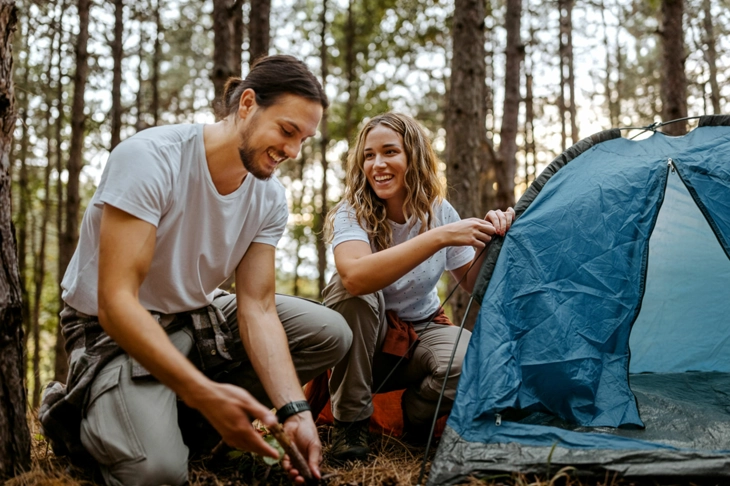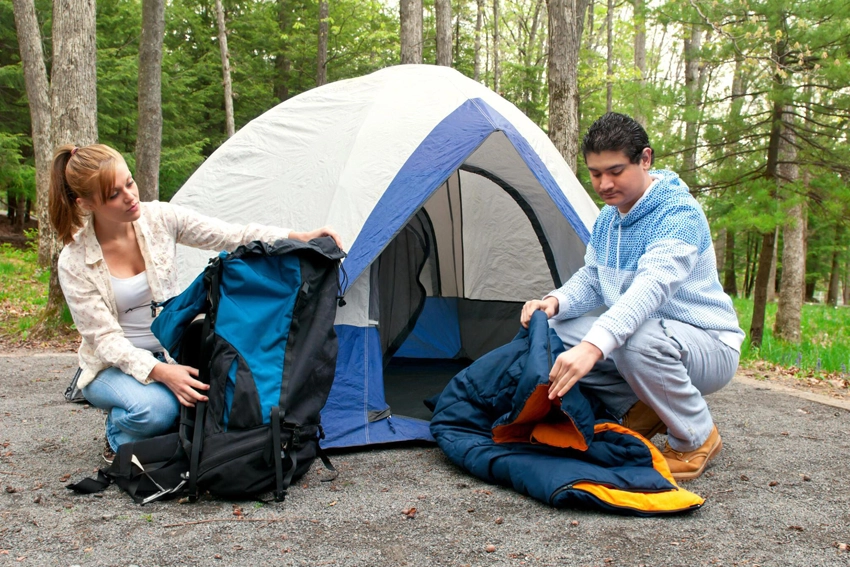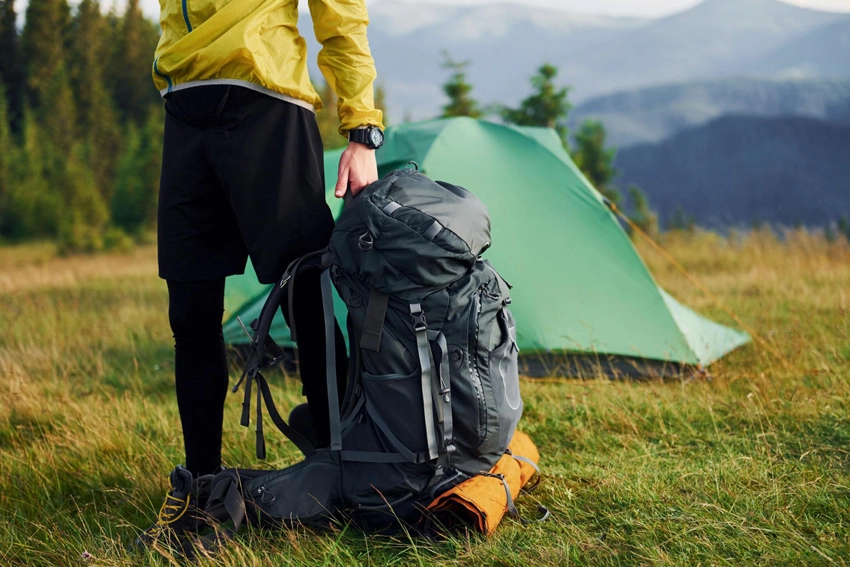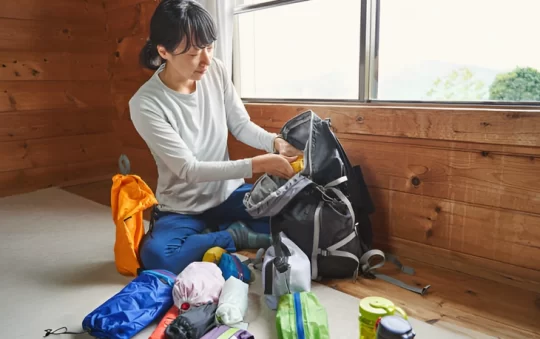Heading into the wilderness for a backpacking trip isn’t just about adventure—it’s about being prepared. Your tent plays a vital role as your shelter, protecting you from the elements and giving you a safe space to rest.
Knowing how to pack your tent properly is key to a smooth and hassle-free outdoor experience.
In this guide, we’ll walk you through everything you need to know about packing your tent for backpacking. From choosing the right tent to fitting it efficiently into your backpack, you’ll learn tips to save space, reduce weight, and keep your gear organized.
Let’s get started and explore how to pack your tent so you can enjoy your wilderness adventure with ease and confidence.
Choosing the Ideal Tent
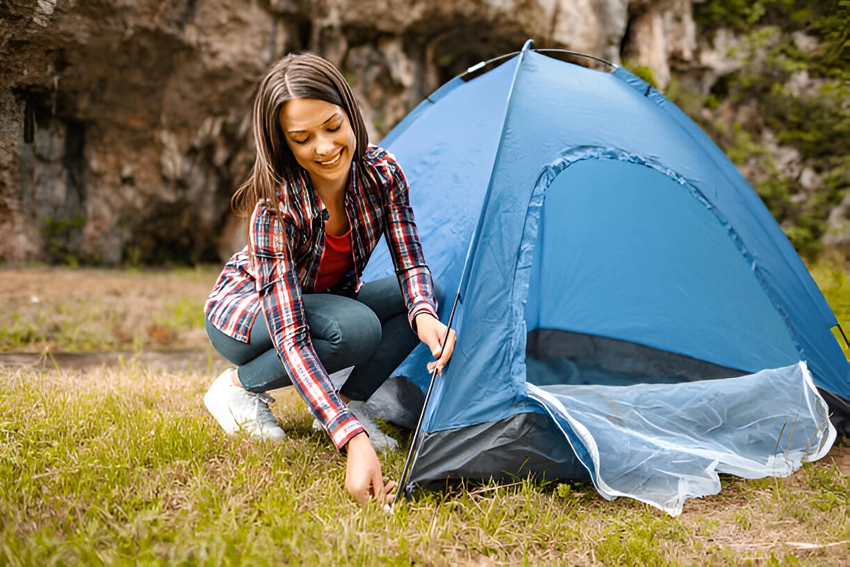
Preparing for a backpacking trip starts with choosing the right tent. Here are some key things to consider:
Exploring Tent Types:
Getting ready for your backpacking trip starts with selecting the right tent. There are different types of tents, each with its own benefits. Freestanding tents are easy to set up and can be moved around easily, while non-freestanding tents are lighter but require stakes for support.
Semi-freestanding tents offer a balance between the two, providing convenience without too much added weight. When choosing your tent, consider its weight, interior space, and its ability to handle different weather conditions.
Weight and Portability:
The weight of your tent is an important factor to think about. Ultralight tents are perfect for those who prefer to keep their pack light, while larger tents may offer more space but at the cost of additional weight. Look for a tent that is lightweight and can be packed down compactly to save room in your backpack.
Capacity and Interior Space:
Capacity also plays a big role in your decision. Choose a tent that suits the number of people using it, but remember that backpacking tents can feel tight. If you need extra space for gear, look for tents with vestibules or interior pockets that help with organization and comfort.
Seasonal and Weather Adaptability:
The weather you expect on your trip should help guide your choice. Three-season tents work well in spring, summer, and fall, while four-season tents are built for harsher winter conditions. For rainy weather, make sure the tent has a waterproof rainfly and floor to keep you dry.
Ease of Assembly and Durability:
Setting up your tent easily is another key factor to consider. Look for tents with color-coded poles or simple clips to make pitching easier. Durability is also important, so choose a tent made from sturdy materials that will stand up to frequent use during your adventures.
By considering these factors carefully, you’ll find a tent that meets your needs and helps you have a comfortable and enjoyable backpacking experience. Take your time exploring different models, and choose the one that best fits your journey.
Disassembling and Folding the Tent
Properly taking down and storing your tent is important for keeping it in good condition for future trips. Follow these simple steps to ensure your tent stays ready for your next adventure:
Remove Stakes and Guy Lines:
Start by removing any stakes and guy lines that are securing the tent. Carefully pull out each stake and make sure the guy lines are loose before coiling them neatly to avoid tangling.
Detach the Rainfly:
If your tent has a separate rainfly, unclip or unzip it from the main tent. Lay the rainfly flat on the ground and then fold or roll it up neatly to keep it compact.
Collapse the Tent Poles:
Follow the manufacturer’s instructions to fold the tent poles. Most poles are connected by shock cords, which makes it easy to collapse them into shorter sections.
Disassemble the Tent Body:
Once the poles are removed, unclip or unzip the tent body from the poles. Lay it flat and smooth out any wrinkles to make folding easier.
Fold or Roll the Components:
Start with the tent body, folding it lengthwise, then into thirds or quarters depending on its size. Do the same for the rainfly, ensuring it matches the size of the folded tent body.
Organize and Secure:
Arrange the folded or rolled components to maximize space in your backpack. Place heavier items like the poles at the bottom to evenly distribute the weight. Use compression straps or stuff sacks to keep everything secure and prevent shifting during transport.
Perform Final Checks:
Before packing away your tent, do a final check to ensure all components are properly folded and secured. Look for any missed stakes or guy lines and inspect the tent and rainfly for any damage or wear that may need fixing.
By following these steps, your tent will stay in excellent condition and be ready for your next outdoor adventure!
Packing Your Tent in Your Backpack
As you prepare for your hiking adventure, packing your tent efficiently can make a big difference. Here are some simple tips to help you pack it properly:
Building a Solid Base:
Start by placing your folded tent body or footprint at the bottom of your backpack. This creates a stable base for your gear and helps keep the weight balanced.
Organizing Tent Poles:
Slide the collapsed tent poles along the sides of your backpack. Use any internal straps or pockets to keep them in place. Make sure they don’t press uncomfortably against your back while hiking.
Including the Rainfly and Extras:
Place the folded or rolled rainfly on top of the tent body. Tuck it between the tent poles and the main compartment of your pack. If your backpack has external attachment points, you can secure the rainfly outside to free up space inside.
Keeping Small Items in Check:
Store smaller items like stakes, guy lines, and repair kits in pockets or compartments within your backpack. Use zippered pockets, mesh pouches, or gear loops to keep everything organized and easy to reach.
Compression and Adjustment:
Once everything is packed, use compression straps or cinch straps to secure and compress your gear. Adjust the straps to make sure the weight is balanced and the pack stays stable as you hike.
Final Check:
Before you hit the trail, double-check that everything is packed securely and balanced. Make sure no stakes or guy lines are sticking out and protect the rainfly from any snags or damage.
Proper packing helps ensure a more comfortable and smooth hiking experience, so take your time to pack carefully.
Final Checks and Adjustments

Before you head out on your hike, making sure your tent is packed securely and your backpack is properly adjusted is important for a smooth adventure. Here’s a simple guide to help you get it right:
Check Stability and Balance:
Test your backpack by shifting your weight from side to side. Make sure the weight is evenly spread and that the backpack feels comfortable and stable on your back.
Inspect Compression Straps:
Tighten all compression straps to keep your gear compact and prevent it from shifting. Adjust them as needed to maintain balance and reduce movement.
Confirm Accessibility:
Make sure items like water bottles, snacks, and navigation tools are easy to grab without having to dig through your entire pack. Organize them so you can reach them quickly when needed.
Protect the Rainfly:
Check that the rainfly is secured and protected from snags. Use compression straps or gear loops to keep any loose fabric in place and avoid damage.
Ensure Comfort and Fit:
Adjust the shoulder straps, hip belt, and sternum strap to ensure a comfortable and secure fit. The weight should be well-distributed, and the straps shouldn’t dig in or cause discomfort.
Verify Emergency Essentials:
Double-check that emergency items like a first aid kit, navigation tools, and communication devices are easy to access. Know where they are so you can quickly grab them if necessary.
Consider Environmental Factors:
Take a moment to think about the weather, terrain, and any potential hazards. Adjust your gear and packing strategy to be prepared for any challenges.
By following these simple steps, you’ll be ready for a safe and enjoyable hiking experience.
In Conclusion
As you finish preparing for your backpacking trip, you’re ready to pack your tent and start your adventure with confidence. By carefully choosing your tent, taking it apart properly, and focusing on keeping the weight down, you’ve made the most of your space and ensured quick access to everything you need.
Before hitting the trail, take a moment to do a final check and make any last adjustments. Make sure your gear is packed securely, and your backpack is comfortable and balanced. Get familiar with your equipment and stay ready to adapt to different terrain and changing conditions.
When it’s time to relax at camp, be sure to check out our guide to the best backpacking chairs. They’re perfect for unwinding after a day of hiking and taking in the beauty around you.
Remember, backpacking isn’t just about the hike. It’s about enjoying the peace and connecting with nature. Whether you’re navigating tough trails, setting up your tent under the stars, or sharing stories around the campfire, each moment is a reminder of your strength, resourcefulness, and respect for the outdoors.
As you journey into the wild, may your backpacking experience be full of unforgettable moments, meaningful connections, and a deeper appreciation for nature. Safe travels, and may your adventure be just as rewarding as the destination itself.
